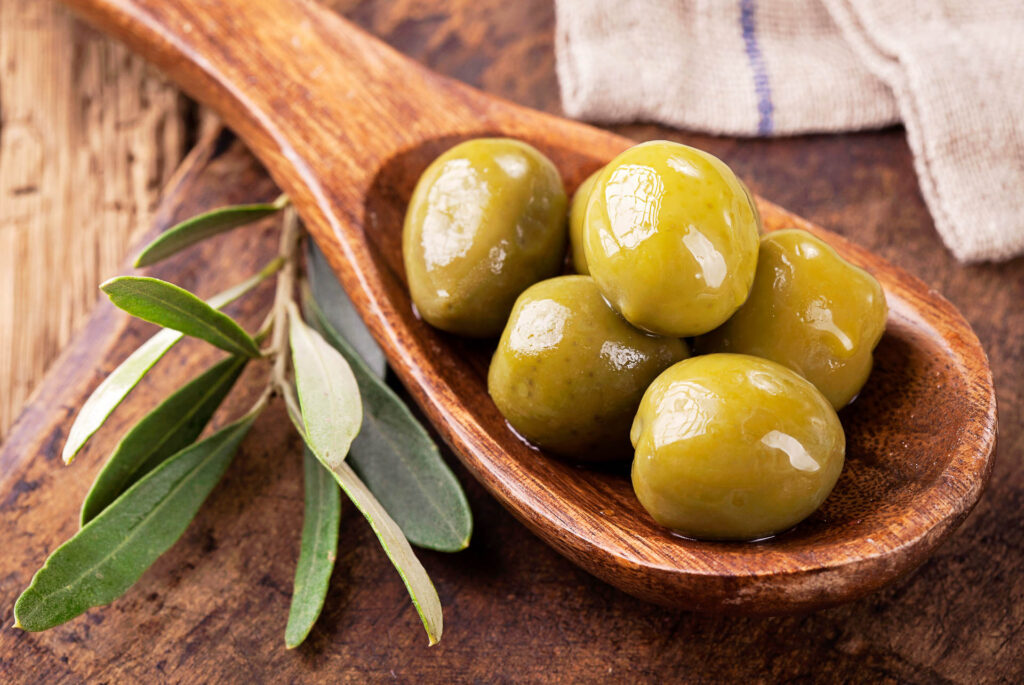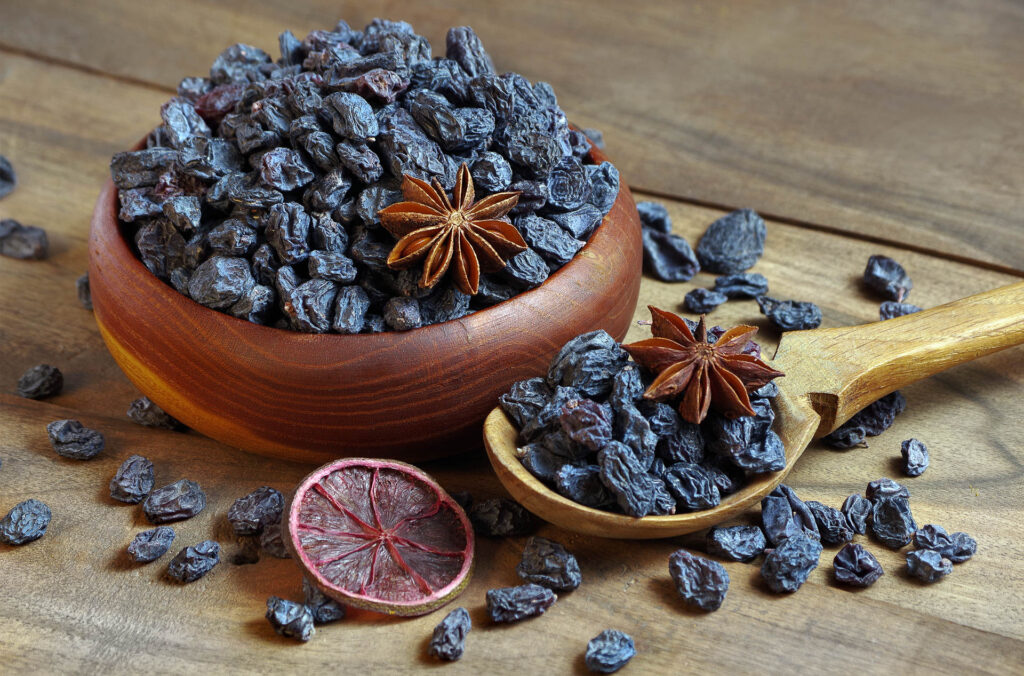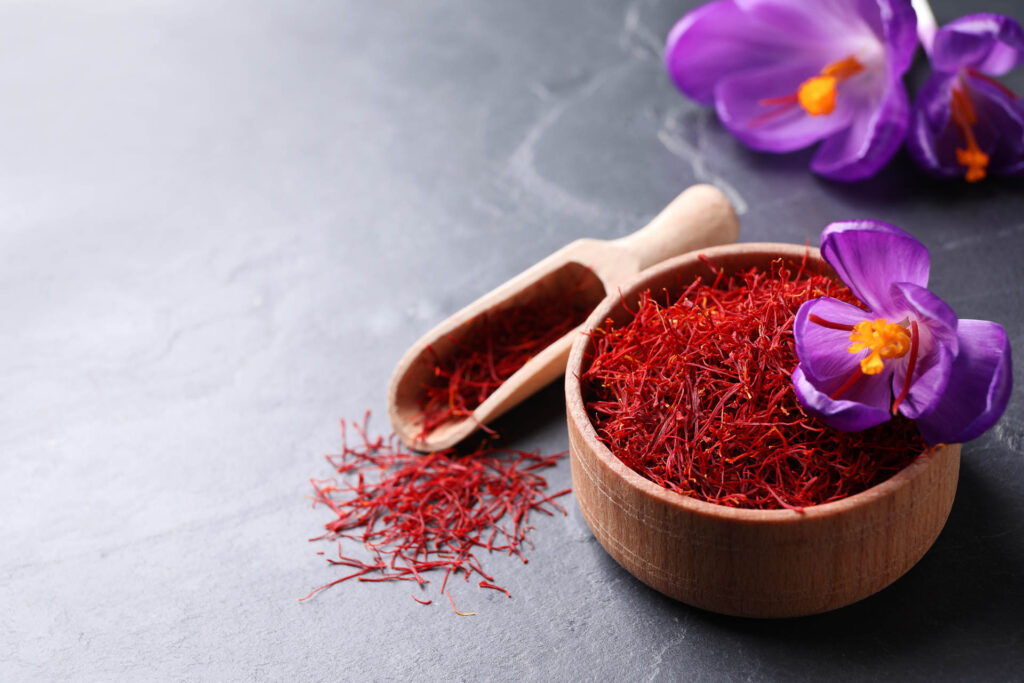PDO PRODUCTS
PDO PRODUCTS
PDO Konservolia Rovion

Konservolia Rovion olive is from olive trees grown within the Rovies municipality in central Greece. The trees of the Konservolia Rovion preservation are characterized by exceptional robustness and high productivity capability. This is the most common table variety in Greece. The unique characteristics of the product are attributed to the natural environment and the particular microclimate of the area. These conditions make the flesh of the olive crispy with a dark green color and a characteristic aroma of olive oil. A distinctive characteristic of the “Konservolia Rovion” is its exceptional earliness. Today, it is considered the earliest Greek olive variety. In this variety natural processing is used, without the use of caustic soda, which is used in the processing of green olives worldwide. They are renowned for their nutritional value, as well as their excellent quality and their correct Mediterranean taste is ensured. In addition, Konservolia Rovion can be served as it is or sliced in many serving suggestions. |
PDO Konservolia Stylidas

Konservolia is the main variety grown in the area of Fthiotida and is a product of PDO. This variety yields table olives that are famous for their rich organoleptic characteristics. The temperate Mediterranean climate of the region, the ideal altitude of the cultivated land, the sea’s distance, combined with an average annual temperature of 16.5 degrees Celsius, help the trees of this variety to grow and thus, ensure a balanced proportion of all those nutrients that make this variety unique and the quantity produced satisfactory. The production model is based on the principles of integrated and environmental management. The model has been adjusted to olive cultivation and can be applied in a manner that complies with all the requirements of the national and global certification standards, as well as the requirements of existing quality systems, in line with the principles and specifications of integrated management. |
PDO Korinthiaki Stafida Vostizza

In the semi-mountainous and mountainous area of Aeghialia, Corinthian Currant Vostizza, a unique product, is being cultivated for centuries. Since Homer’s times, to Queen Elizabeth A, Vostizza currants travel through the ages. The production of raisin is very long and time demanding. After harvesting, the fruits (grapes) are spread in special designed outdoor areas for sun drying. Drying process is followed by separating only of the finest nipples and the packaging. Corinthian Raisin is used in pastry as a natural sweetener. There are many Greek recipes that contain raisin in natural forms, as well as many people eat it as a healthy snack. |
PDO Krokos Kozanis

Krokos Kozanis PDO is the premium hand-picked saffron with the long crimson threads, floral aroma, unique taste, and unmistakable vibrant color. It is protected by certification and sourced from the best fields in the mountainous region of Kozani, Greece, known for producing the world’s finest saffron. Krokos Kozanis, one of Greece’s many PDO (Protected Designation of Origin) products, is grown and harvested by about 1.000 families in the 25 villages and hamlets around the city of Kozani, North West of Greece. The harvest takes place in late October and early November. Getting a kilo of saffron means plucking the powdery threads from about 150.000 flowers. |
PDO Graviera Kritis

Graviera of Crete is one of the most famous Cretan cheeses that is consumed widely in Greece. It is geographically located in the island of Crete. The name Graviera of Crete is recognized as a protected designation of origin (PDO) product. This cheese has a long history, and it is the best-known Greek graviera cheese. It is traditionally produced from mixture of both sheep and goat milk, which can be in the ratio up to 20%. It is a table cheese with a white-yellow color and small scattered holes, firm texture, that impresses with its aroma and taste. It can accompany all Greek meals, while it is, also, used as breakfast. It is traditionally an accompaniment to raki or wine along with honey, nuts, dried fruits & fresh vegetables. It is free from preservatives, colorants, and antibiotics, maturing for at least 3 months to acquire its distinctive characteristics that make it highly sought after. Ιt is a high-quality cheese with pleasant sensory properties. |
PDO Mastiha Chiou

Mastiha production takes place only in Mastihohora, in the Southern part of Chios island, due to the unique soil and climate conditions of the region. It is a legendary product intertwined with traditions, historical circumstances, and cultural exchanges, as it is being collected since ancient years. Mastiha is a natural resin that comes from an evergreen tree which is called “Schinos” and belongs to the family of Pistacia. It is a natural, aromatic resin in teardrop shape that falls on the ground in drops from superficial scratches induced by cultivators on the tree’s trunk and main branches with sharp tools. In Mastiha we find a great variety of therapeutic and aromatic ingredients and it has many uses in both food sector and health/personal care in global scale. It has been recorded as the first natural chewing gum of the ancient world, used for teeth cleaning and freshening breath. In addition, the know-how of cultivating Mastiha has been included by UNESCO on its Representative List of the Intangible Cultural Heritage of Humanity. |
PDO Mastiha oil

Mastiha oil is a natural, aromatic, rare resin in teardrop shape produced only in the Southern part of Chios Island, from the mastic tree. Mastiha oil is used in its natural form or in many other ways. The popular product is mastic oil that is produced from the distillation of the Mastiha Chiou with steam. It is 100% natural product and contains an exceptional variety of therapeutic and aromatic ingredients. Its ingredients are renowned for their nutritional value and their contribution to personal care products: antiseptic creams, oral hygiene products, and body care products. It is also used as a flavoring agent in food production. Another positive aspect is that it has antimicrobial action against the bacteria that cause ulcers. |
PDO Vorios Mylopotamos Rethymnis Kritis

The Extra Virgin Olive Oil Vorios Mylopotamos, Rethymnis PDO, originates from the area of Northern Mylopotamos in Rethymno (Crete) and is produced solely using mechanical methods. This specific olive oil stands out for its golden yellow color and the fruity taste. The main olive variety to produce this olive oil is Koroneiki. The low acidity is associated with the quality of olive oil, giving it the distinctive characteristics of Extra Virgin Olive Oil. At all stages, from cultivation to packaging, significant measures are taken, not only to ensure the quality, but, also, the sustainability of its production. Main factors that differentiate its quality are the climate, the soil composition, and the cultivation methods. |
PDO Viannos Irakliou Kritis

Viannos PDO olive oil is one of the most famous products produced in the municipality of Viannos, Crete. According to the history, Homer used to call olive oil “liquid gold” and Hippocrates named it the “Great Healer”. Since the ancient periods, the olive tree and its fruits have been praised as the symbol of peace. Viannos olive oil is distinguished for its rich taste, golden color, and fruity aftertaste. It constitutes an exceptional combination of a unique microclimate and centuries-old culture. The olive oil from Viannos is of very high quality, Extra Virgin Olive Oil, which is why it has received the PDO (Protected Designation of Origin) certification. |
PDO Messara

It is an exceptional Extra Virgin Olive Oil from the famous region of Mesara in Crete, Greece. It originates from the Koroneiki variety. It has a bright green color, which matures into a greenish-yellow hue. Its aroma is characterized as strong and fruity. The taste is bitter and peppery, causing a burning sensation in the throat. It is a unique olive oil with natural ingredients, full of flavor and pleasant fruity aroma, nutritious properties, and low acidity up to 0.2%, without chemical substances. It is produced naturally by simply extracting the olive fruit under cold pressure to preserve all its vitamins. This olive oil is excellent in Mediterranean cuisine, in salads, vegetables, meat, fish, and poultry. Due to the dry-heat conditions prevailing in the region of Messara in the prefecture of Heraklion in Southern Crete, its content of unsaturated fatty acids is increased, making it an exceptional Extra Virgin Olive Oil with high nutritional value. |
PDO Kolymvari Chanion Kritis

Kolymvari Extra Virgin Olive Oil mainly comes from the Koroneiki variety in the region of Chania, in Crete. Olive oil production on the island has been taking place since the peak of the Minoan civilization, and it was one of the main products exported to the entire known world through maritime trade, bringing great wealth to the island’s inhabitants. The soil and climatic conditions on the island are ideal for the cultivation of olives destined for olive oil production. This Extra Virgin Olive Oil is produced in cold, thus retaining all its organoleptic characteristics, is free from moisture and from any foreign matter. The production of the olive oil is done without any chemical processing, aiming for the final product to be of the highest possible quality on a global scale, with exceptionally low acidity and unique nutritional characteristics. The above results an olive oil with unparalleled flavor and distinct aroma ideal for salads, pasta, and grilled vegetables. It is, also, renowned for its nutritional value. Thus, Kolymvari Extra Virgin Olive Oil became famous not only in Greece but also worldwide, and now one can find it at the four corners of the earth. |



Funded by the European Union. Views and opinions expressed are however those of the author(s) only and do not necessarily reflect those of the European Union or the European Research Executive Agency (REA). Neither the European Union nor the granting authority can be held responsible for them.
